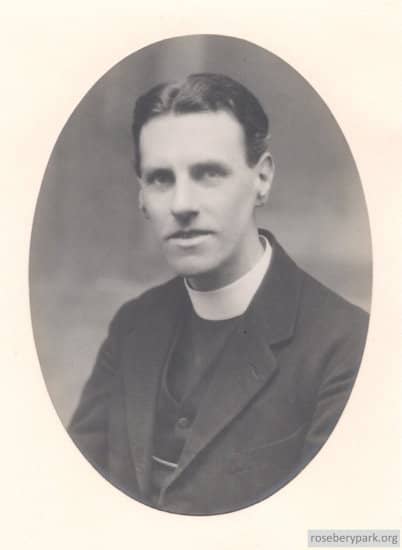
Rev. James Greig Douglas oversaw further expansion work on the chapel, with the addition of a pulpit, choir stalls and a gallery in 1925. For the three months this building work was being carried out, the Sunday services were held in the Technical Hall. A new organ with an electric blower was installed. Up until then Mr. Addoo had received fifteen shillings a week as the organ blower! The issue of women being allowed to be deacons was discussed, but rejected at this time. As of 1926, the membership had grown to 120.47
Rev. J. Greig Douglas, Minister at RPBC 1923 to 1929. Photo property of RPBC.
A PDF of the newspaper articles is available here. They are images, and not plain text, but they can at least be enlarged for easier viewing this way.
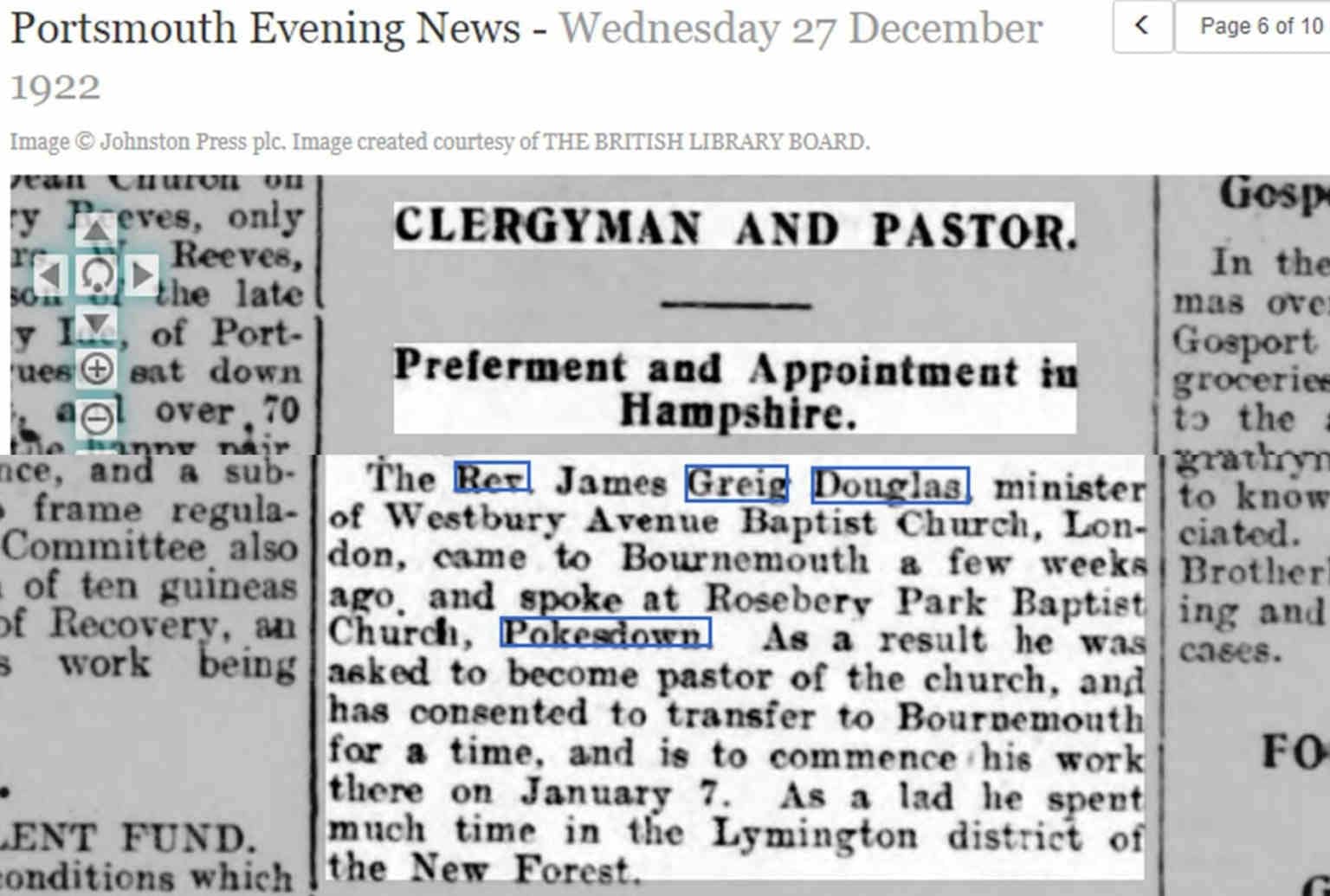
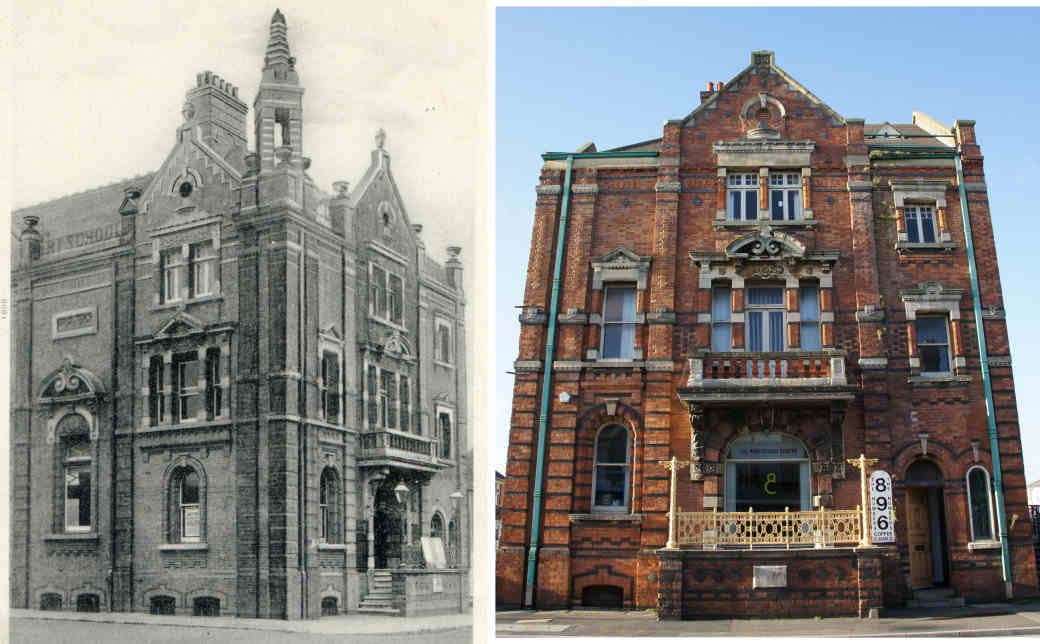
The 1920s and 30s were economically unstable years. There had been high unemployment after the Great War. An article from December 1919 explains there were 1,800 on the local labour exchange, and the difficulty arising from so many of the returning service men being unskilled owing to them entering the services before becoming trained workmen; in addition, many of the men were partly disabled.48 Post-war unemployment levels were reduced, so that by April 1925 there were only 400 unemployed in Bournemouth49, but trade disputes were so bad that by May 1926 the General Strike had begun50. Britain also suffered in the aftermath of the American 1929 Wall Street Crash. Historic-UK explains: “In the first few years after the crash, British exports fell by half which had a disastrous effect on employment levels. The numbers of unemployed in the years that followed was astronomical, rising to around 2.75 million people, many of whom were not insured. The high levels of unemployment and lack of business opportunities were not equally felt across Britain, with some areas escaping the worst of it, whilst at the same time others suffered terribly.”51 Bournemouth was not among the worse hit, due to not being an industrial area. In Bournemouth, there were 1,023 people unemployed in February 193052, and that was up to 1,418 by May 193153.
This snippet from Streets of Bournemouth’s ‘Bournemouth’s People’ 54 paints a picture of one Pokesdown man’s ‘signing on’ ritual (year not given):
“There were many unemployed people in the 1920s and 1930s. Among them was George Veal who described the queue at the Labour Exchange in Yelverton Road as four deep and stretching from there down to Old Christchurch Road and up as far as Dalkeith Steps. A gap was left outside the Cadena Café for the morning coffee trade. ‘Signing on’ was a twice weekly ritual. Walking back to Pokesdown, Mr. Veal and others would scour the roads for enough ‘fag ends’ to make a cigarette. At the Pokesdown Technical Schools, they could buy a cup of tea and a bun for a penny and if they were lucky get one free. This was a time when street singers, buskers and pedlars were a common sight.”
The Illustrated London News, 8th April 1933, has a double page spread of drawings showing ‘Social services on behalf of the unemployed in the South and South-west of England’. One of the scenes is ‘Cutting timber for logs, Pokesdown Centre, Bournemouth’:
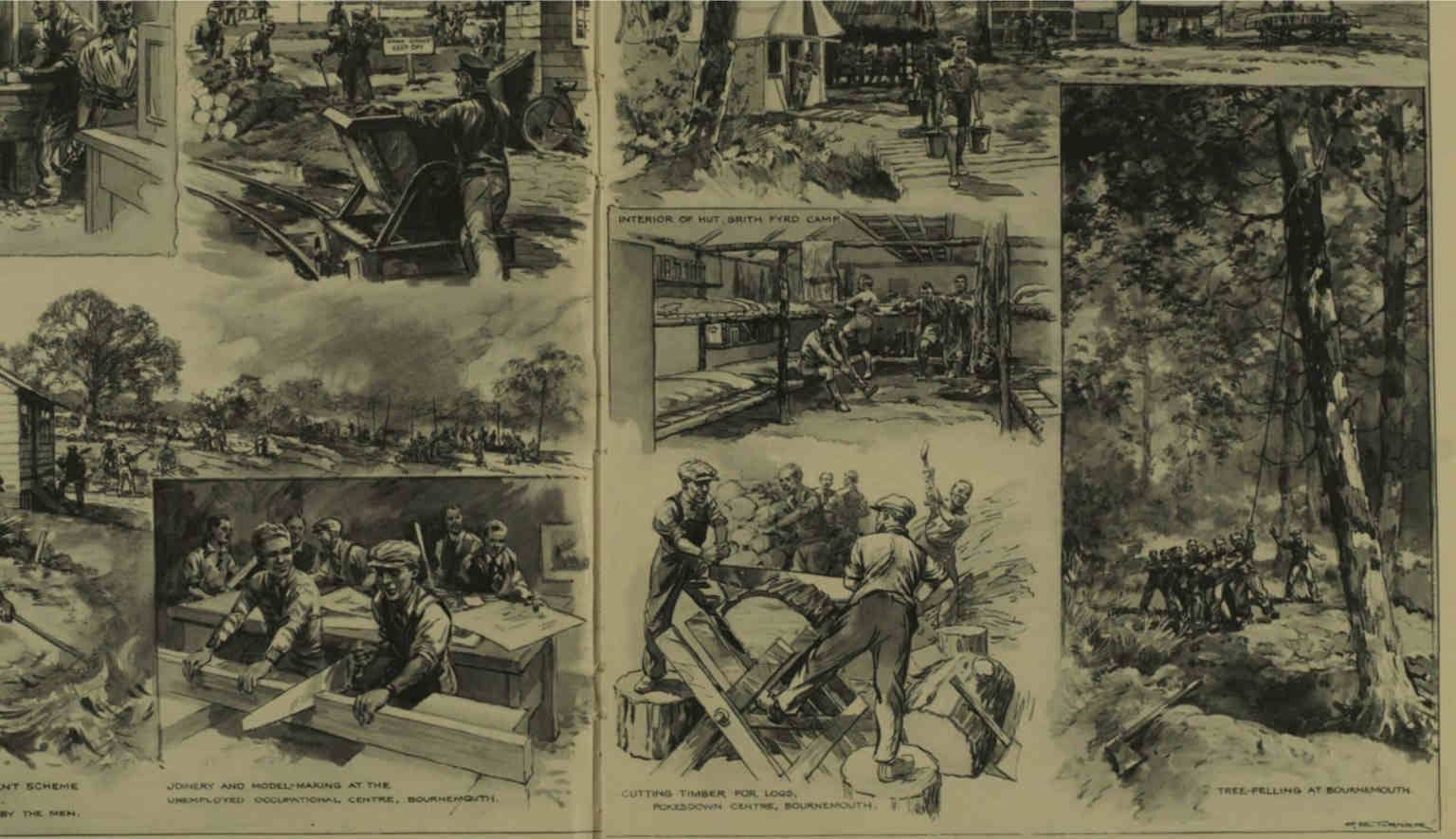
Yet also, as ‘Streets of Bournemouth’ ‘Tourism & The Town’ explains, during the period from 1925 to 1937, the proportion of workers who had some sort of paid holiday rose from 17% to 47%. The Holidays with Pay Act 1938 increased that to 60%. By the time war broke out again in 1939, annual holidays of a week or longer were well established as a part of family life.
A daily Manchester to Bournemouth railway service was introduced by the London & North Western and Midland Railways in October 1910, but from 26th September 1927 it was to become known as the named passenger service, the Pines Express, leaving Manchester at 10am before the long journey to Bournemouth West station.55 Plus daily trains from London Waterloo.56
Poster from National Railway Museum/Science & Society Picture Library. © Board of Trustees of the Science Museum Group. Used with permission. Thank you!
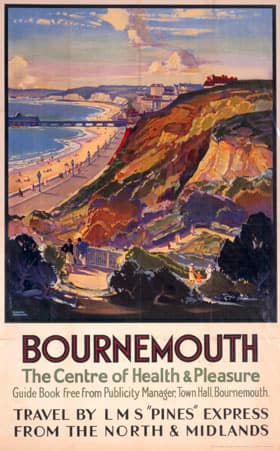

From June 1929 to 1931, one of the pastimes in Pokesdown could be watching the large job of the rebuilding of Pokesdown Station. The original 1886 station entrance had been in the centre of the bridge, but this 1929-31 construction saw it moved to its current-day position, and instead of one central ‘island’ platform, separate platforms were built for the ‘up’ line and ‘down’ line, with a new footbridge to link them.56a I can’t find the date the lifts from the platforms to the footbridge were fitted. If you know when it was, let us know! It could have been now as the lifts were manufactured by Aldous & Campbell who made lifts from the 1900s until 1967.56b
The copy and paste citation for this page:
The History of Rosebery Park Baptist Church and Pokesdown, Page 8. Author: Michelle Fogg. Date: May 2022. Url: https://roseberypark.org/history/rosebery-park-and-pokesdown-8/
Sources of Information for The History of Rosebery Park and Pokesdown (opens in new tab)
Go To About Us
Go to Other Activities
Rosebery Park Baptist Church, 812-814 Christchurch Road, between Boscombe and Pokesdown, Bournemouth, BH7 6DF
